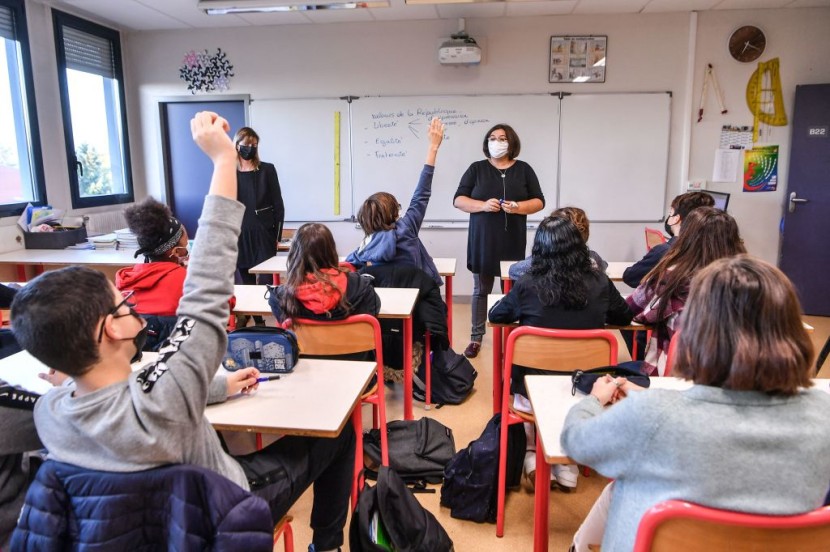According to the French education minister, about 300 students arrived at school on Monday wearing the abaya, a long Muslim robe that was prohibited in schools last week.
The majority of the girls consented to change their outfits, as reported by BBC News.
Official records show that 298 girls, mostly aged 15 and higher, showed up to school wearing the prohibited clothing. Following the ministry's directions, there was a time of communication with school staff in each case.
The majority of them then decided to dress differently and were permitted to begin classes. Sixty-seven girls, however, refused to comply and were sent home.
A new round of discussions with their families will now take place. If it fails, they will be kicked out.
In comparison to the 12 million schoolboys and girls who began classes on Monday, the administration feels the data prove that the prohibition has been widely accepted. However, a judicial challenge filed by an organization representing some Muslims is scheduled to be heard later today.
The Prohibition of the Abaya
The education minister declared at the end of August that students in France's state-run schools will be prohibited from wearing the loose-fitting full-length robes used by some Muslim women beginning on September 4th.

Religious signage is strictly prohibited in state schools and government buildings in France, stating that they contravene secular rules.
Since 2004, wearing a headscarf at state-run schools has been prohibited. The decision follows months of controversy around the wearing of abayas in French schools.
The garment is increasingly being worn in schools, causing a political schism, with right-wing parties campaigning for a ban and those on the left concerned about the rights of Muslim women and girls.
France banned full-face veils in public in 2010, infuriating France's five million-strong Muslim community.
Since the nineteenth century, France has strictly prohibited religious indications in schools, especially Christian symbols such as huge crosses, in an effort to limit Catholic influence in public education.
It has revised the rule throughout the years to include the Muslim headscarf and Jewish kippa, reflecting its growing demographic, but abayas have not been explicitly banned until now.
Read also: Why Religions Will Become Extinct by 2041, Researcher Explains
France's Ban on Religious Indications in Schools
France has a long history of secularism, and this is reflected in its laws and policies. One of the most controversial laws is the ban on religious indications in schools. This law prohibits students from wearing any religious symbols, including headscarves, kippahs, and large crosses.
The law was passed in 2004, and it has been challenged in court several times. However, it has always been upheld. The French government argues that the law is necessary to protect the secular nature of public schools and to promote equality between students.
Supporters of the law argue that it is important to create a neutral environment in schools where all students can feel comfortable and accepted. They also argue that the law is necessary to protect women's rights, as they are often the ones who are pressured to wear religious symbols.
Opponents of the law argue that it is discriminatory and that it violates the right to freedom of religion. They also argue that the law is not effective in promoting secularism, as students can still express their religious beliefs in other ways.
The debate over the ban on religious indications in schools is likely to continue for many years to come.
Related article: France Bans Full-Length Muslim Robes in Classrooms, Calls Attire an Attempt To Convert Others to Islam








